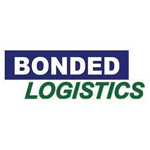Warehouse KPI Dashboard Examples and Insights for Mastery
In the dynamic world of warehousing and logistics, one must not overlook the power of data-driven decision-making. Enter KPI dashboards, the control panel for managers navigating the complex maze of warehouse operations. What are they? In its essence, a KPI—or Key Performance Indicator—dashboard is a collection of metrics that are pivotal for tracking the efficiency, productivity, and overall health of your warehouse operations. They offer a snapshot of your warehouse’s performance at any given moment.
Why does it matter in warehouse management? Imagine driving a car with a dashboard that doesn’t function—no speedometer, no fuel gauge, no nothing. You’re driving blind, unable to react to the reality around you or make informed decisions. This is precisely why KPI dashboards are integral to warehouse management. They provide visibility into the core processes and enable managers to drive the operations with eyes wide open.
So, in this guide, we’ll cover what should be included in a warehouse KPI dashboard. We’ll also provide KPI dashboard examples so that you can learn how to best monitor the key performance indicators that are most important to your business.
The Impact of Warehouse KPI Dashboards
Let’s consider the impact that effective KPI tracking can have on your warehouse operations. For starters, KPI dashboards light up the path to enhanced productivity. By monitoring indicators such as Inventory Turnover or Order Cycle Time, managers can pinpoint exactly where processes are lagging, allowing them to implement targeted improvements. No longer is there a need to rely on gut feelings or hunches. You can let the data speak for itself.
Furthermore, KPIs aren’t just about keeping an eye on current performance—they are key for strategic planning. By observing trends over time, warehouse managers can forecast future needs, identify potential bottlenecks before they occur, and tailor their resource allocation accordingly. It’s the difference between being reactive and proactive, between being a step behind and two steps ahead.
The influence of warehouse KPIs stretches beyond operational efficiency, however. They are also potent catalysts for cost savings. Consider Carrying Cost of Inventory, for example. By keeping tabs on this metric, warehouses can minimize the financial drain of overstocking and reduce the capital tied up in inventory that could be invested elsewhere. Similarly, Picking Accuracy KPIs can lead to fewer errors, saving costs associated with returns and re-shipping, not to mention preserving your company’s reputation.
And let’s not forget the ultimate endgame of any business—the customer. KPI dashboards are instrumental in driving customer satisfaction. Metrics like Perfect Order Rate and Back Order Rate make it clear how effectively a warehouse fulfills its promises. A high Perfect Order Rate correlates with happy customers who are likely to return, whereas a high Back Order Rate may spell trouble in customer relations and retention.
Getting Data Into Your Warehouse KPI Dashboard
But where does all this data come from? Integrating multiple data sources is key. A warehouse KPI dashboard is only as good as the information it displays. It must pull in data from your:
- Warehouse management system (WMS)
- Inventory management systems
- Order processing platforms
- Shipping and receiving logs
- Workforce management applications
- Etc.
The consolidation of this data into one accessible location is what gives a KPI dashboard its power. It brings together different threads of the operation, enabling managers to see the full picture and act accordingly.
Don’t Be Afraid of Having Too Much Data
The thought of delving into data analytics can be daunting. But fear not, the modern warehouse KPI dashboard is not the clunky spreadsheet of years ago. A good dashboard is a sleek, intuitive interface designed for clarity and ease of use. Visual tools and customizable widgets can transform rows of raw data into charts, graphs, and gauges that convey meaning at a glance. With these at their disposal, warehouse managers can navigate the data seas with confidence.
In summary, KPI dashboards are not just handy tools—they are the lifeblood of informed warehouse management. They empower managers to measure what matters, make data-backed decisions that propel efficiency, drive cost savings, and enhance customer satisfaction. The ripple effect of a well-implemented KPI dashboard can be transformative, turning the complexities of warehouse management into opportunities for growth and excellence.
Next, we’ll dive into identifying the core warehouse KPIs, revealing the metrics that are vital for a warehouse. Ensuring operations run efficiently and effectively.
Identifying Core Warehouse KPIs
Inventory Accuracy
A warehouse is only as reliable as its stock records. Inventory accuracy is the degree to which your on-paper records match the actual stock on your warehouse shelves. This KPI is a must-have because mismatches can cause mayhem, from unnecessary re-orders to unfilled sales, all culminating in an unpleasant customer experience. Keeping a tight grip on this KPI means you’ll dodge the bullets of stock-outs and overstock scenarios.
Carrying Cost of Inventory
The longer your inventory is stored in your warehouse, the more it costs. The carrying cost of inventory is all about nailing the true price of storing your goods before they’re sold. It’s not just about the space they take up; it’s also about insurance, taxes, depreciation, and even obsolescence. By watching this KPI like a hawk, you can weave a tighter budget and keep those costs from snowballing.
Inventory Turnover
Imagine your warehouse is a restaurant; inventory turnover tells you how fast the food is flying out of the kitchen. In warehousing terms, it’s a measure of how often you sell and replace stock over a specific period; showing you how well your goods are moving. The faster the turnover, the fresher your inventory, and the leaner your operations.
Inventory to Sales Ratio
This KPI is about balance. It’s the tightrope walk between having enough goods to meet sales demands and not having so much that your storage costs go through the roof. The inventory to sales ratio helps you stay agile, keeping just enough stock on hand without tipping into wasteful overstock. It’s the financial seesaw that, when balanced, keeps your cash flow healthy.
Order Cycle Time
Speed matters in logistics, and the order cycle time KPI is your speedometer. It clocks the average time from when an order is placed until it’s out the door and on the way to the customer. This metric is essential for evaluating the efficiency of your delivery system. In a world where customers expect rapid service, reducing this time as much as possible is key to customer satisfaction.
Perfect Order Rate
Flawless execution is the holy grail in warehousing, and the perfect order rate tells you how often you’re hitting that mark. This KPI measures the share of orders that are spot on – right items, right quantities, right condition, right place, and right time. It’s a direct reflection of your warehouse’s ability to deliver on promises and keep customers coming back for more.
Back Order Rate
When demand outpaces supply, you’ve got back orders, and a high back order rate can spell trouble. This KPI tallies the proportion of orders that you can’t fill right away because the items aren’t in stock. It’s a clear indicator of whether your inventory planning is on point or if it needs a serious rethink.
Picking Accuracy
Getting the right items off the shelves and into the shipping box is what picking accuracy is all about. This KPI keeps score of how often your team nails it because a mis-pick can trigger a domino effect of returns, reshipments, and upset customers. Dial in your picking accuracy, and you’ll see customer satisfaction scores soar and return rates plummet.
Carrying Costs
Here’s a broader view of what it costs to keep your inventory in check. Beyond the basics, carrying costs dive into the nitty-gritty of insurance, labor, and warehouse utilities – all the “behind the scenes” expenses of running a smooth operation. By monitoring this KPI, you can start chipping away at the excess and shaping a lean, mean warehousing machine.
Use of Packaging Material
As the world turns an eco-friendlier leaf, packaging is under the microscope. The use of packaging material KPI puts a lens on how much wrapping and boxing you’re using versus how much you really need. Streamlining packaging isn’t just about cutting costs; it’s about taking a stance on sustainability and showcasing your brand’s environmental consciousness.
Transportation Costs and Efficiency
Your goods need to get from A to B, but at what cost? The transportation costs and efficiency KPI evaluates the bang for your buck in getting products to customers. It considers fuel, vehicle maintenance, and route planning. By optimizing this KPI, you could find cost savings that directly fuel your bottom line and ensure deliveries are zipping around with the efficiency of a Formula 1 pit crew.
Related: KPI Dashboard: 16 Tested Metrics
Warehouse KPI Dashboard Examples: Practical Applications in Warehouse Management
Let’s explore some real-world examples that illustrate how KPI dashboards can be effectively used in warehouse management. These examples not only demonstrate the versatility of KPI dashboards but also provide actionable tips for improving various aspects of warehouse operations.
Warehouse KPI Dashboard Example: Receiving Process Efficiency
This dashboard focuses on the speed and accuracy of processing incoming goods, crucial for inventory control and order fulfillment.
Tips for Improving Warehouse Receiving Efficiency:
- Implement automated data entry systems.
- Schedule regular staff training.
- Conduct periodic reviews of receiving procedures.
Warehouse KPI Dashboard Example: Picking Accuracy
This KPI dashboard example emphasizes picking accuracy, a cornerstone of customer satisfaction and inventory turnover in warehouse operations. It reflects the precision in fulfilling order items and directly impacts revenue and customer retention.
Tips for Improving Picking Accuracy in Your Warehouse
- Utilize barcode scanning technology to ensure correct item selection, enhancing order processing accuracy.
- Establish a double-check system for orders to minimize errors, improving overall customer service.
- Provide ongoing training for staff, focusing on best picking practices and the use of warehouse management software.
Warehouse KPI Dashboard Example: Shipping Efficiency
This dashboard concentrates on the efficiency and timeliness of the shipping process, a critical aspect of customer satisfaction and operational throughput.
Tips for Enhancing Shipping Efficiency in Your Warehouse:
- Implement advanced shipping software to streamline the dispatch process.
- Regularly train staff on efficient packing and handling techniques.
- Analyze shipping routes and carrier performance for continuous improvement.
Warehouse KPI Dashboard Example: Inventory Turnover
This KPI dashboard example showcases inventory turnover, a key metric in supply chain management. It reflects the rate at which inventory is sold and replenished, providing insights into product demand, stocking efficiency, and overall company revenue.
Tips for Improving Inventory Turnover
- Leverage sales data and analytics for precise demand forecasting.
- Develop strategies for clearing slow-moving stock, enhancing inventory investment returns.
- Foster strong supplier relationships for efficient inventory management, crucial in retail and distribution.
Warehouse KPI Dashboard Example: Reducing Carrying Costs
This example of a KPI dashboard focuses on efficiently managing carrying costs, a significant factor in profit margin, crucial in warehouse operations. These costs involve expenses related to holding inventory and can impact the overall financial health of a company.
Tips for Reducing Carrying Costs
- Analyze inventory regularly using data analytics tools to avoid overstocking and understocking.
- Implement just-in-time inventory practices to reduce holding costs, optimizing cash flow.
- Optimize warehouse layout to streamline the movement of goods, reducing expenses and improving productivity.
Warehouse KPI Dashboard Example: Workforce Productivity
This KPI dashboard focuses on measuring and improving the productivity of warehouse staff, which is vital for overall operational efficiency.
Tips for Boosting Workforce Productivity:
- Use time-tracking tools to monitor and optimize staff performance.
- Implement incentive programs to motivate and reward high productivity.
- Conduct regular training sessions to enhance skills and efficiency.
Warehouse KPI Dashboard Example: Optimizing Order Lead Time
This dashboard measures the time from order receipt to customer delivery, reflecting warehouse responsiveness.
Tips for Improving Order Lead Time:
- Streamline order processing with automation (barcodes, RF scanners, conveyor belts, robotics, AS/RS, etc.).
- Optimize warehouse layout for efficient pick paths.
- Partner with reliable shipping providers.
Warehouse KPI Dashboard Example: Backorder Rate
This KPI dashboard example focuses on the backorder rate, a crucial indicator of inventory management effectiveness in logistics and supply chain operations. It indicates the ability to fulfill orders promptly, impacting customer acquisition cost and retention.
Tips for Improving Backorder Rate
- Enhance inventory forecasting and planning.
- Build robust supplier relationships for quicker restocking, optimizing supply chain management.
- Maintain clear communication with customers regarding product availability, enhancing customer service and experience.
Warehouse KPI Dashboard Example: Enhancing Rate of Return
This dashboard example highlights the rate of return, essential in understanding customer experience and product quality. It measures the frequency and reasons for product returns, impacting customer retention and revenue.
Tips for Improving Rate of Return
- Analyze return data using business intelligence tools to identify patterns and common issues.
- Focus on enhancing product quality and packaging, reducing churn rate and improving customer lifetime value.
- Improve communication with customers regarding product use and expectations, boosting customer experience and satisfaction.
Optimizing Your Warehouse KPI Dashboard
Harnessing Your Warehouse’s Full Potential
To make informed decisions in your warehouse operations, it’s crucial to have a KPI dashboard that aligns with your operational needs. Most modern Warehouse Management Systems (WMS) or similar warehouse software come equipped with KPI dashboards. These dashboards can often be customized or optimized to better fit your unique operational requirements.
Selecting the Right KPIs
- Identify Key Metrics: Start by identifying the KPIs that align with your business objectives. Whether it’s improving efficiency, reducing costs, or enhancing customer satisfaction, choose metrics that directly impact these goals.
- Focus on Relevance: Use the KPI options available in your existing WMS or warehouse software. For instance, if quick market response is your goal, focus on metrics like Order Cycle Time or Inventory Turnover.
Designing for Clarity and Usability
- Prioritize Layout: Arrange the KPIs on your dashboard for clarity and ease of interpretation. Ensure that high-priority metrics are immediately visible.
- User-Centric Design: Tailor the dashboard to be intuitive for your team. This might involve customizing the existing dashboard in your WMS to highlight the most relevant data for different users.
Balancing Information
- Comprehensive yet Concise: Your dashboard should provide a comprehensive view without overwhelming the user. It should offer a quick overview of the warehouse’s performance, with the ability to delve deeper into specific metrics for detailed analysis.
- Leverage Dashboard Customization: If your WMS allows, customize the dashboard to strike this balance. This might involve rearranging widgets, changing display settings, or even creating a completely custom dashboard if necessary.
Integrating Data Streams
- Seamless Data Integration: Ensure that your dashboard effectively integrates data from various sources within your WMS or other connected systems. This integration is key to providing accurate and timely insights.
- Custom Dashboard Option: If your needs extend beyond the capabilities of the standard dashboard, consider developing a custom dashboard. This can be done in-house or with the assistance of a software provider, ensuring that all relevant data streams are cohesively presented.
Whether you’re optimizing an existing KPI dashboard within your WMS or considering the creation of a custom solution, the focus should be on selecting relevant KPIs, designing for clarity and user-friendliness, and ensuring effective data integration. This approach will enable you to effectively monitor and manage your warehouse operations, making data-driven decisions with precision and insight.
Integrating Data Sources for Comprehensive Monitoring
The Importance of Effective Data Integration
In today’s complex warehouse environments, integrating various data sources into KPI dashboards is crucial for a comprehensive view of operations. This integration is key to turning diverse data into actionable insights, a principle that guides our approach at Cadre Technologies.
Utilizing Advanced Warehouse Management Systems (WMS)
- Role of WMS in Data Integration: A robust WMS is central to efficient warehouse operations, capturing critical data from inventory management to order fulfillment.
- Enhanced by Integrated Dashboards: The integration of WMS with KPI dashboards, a feature found in advanced systems like those developed by Cadre Technologies, provides real-time insights for better decision-making.
Broadening Perspectives with ERP Software
- ERP for Wider Business Insights: Integrating ERP software can offer increased data for a panoramic view of your business, linking finance, sales, and supply chain management.
- Strategic Dashboard Enhancement: This integration enriches KPI dashboards, turning them into strategic tools for broader business analysis and planning.
Incorporating Auxiliary Data Sources
- Expanding Data Sources: Beyond WMS and ERP, integrating data from TMS, CRM, and human resource systems can provide a more complete operational picture.
- Data Standardization for Clarity: Ensuring data from various systems is standardized is crucial for consistent and meaningful analysis on integrated dashboards.
Customized Integration Solutions
- Tailoring to Specific Needs: Recognizing the unique needs of each warehouse operation, solutions that offer customization, such as those by Cadre Technologies, can be particularly effective.
- Automated and Accurate Data Flows: Automated workflows facilitate efficient and error-free data transfer, a feature that enhances the utility of KPI dashboards.
Ensuring Data Quality and Security
- Prioritizing Data Integrity: Implementing quality checks and validation protocols ensures the accuracy and reliability of the data on your dashboards.
- Robust Security Measures: Protecting sensitive operational data is paramount, necessitating robust authentication, encryption, and regular security audits.
Integrating diverse data sources into a cohesive KPI dashboard is essential for modern warehouse management. While solutions like those offered by Cadre Technologies can facilitate this integration, the overarching goal is to provide warehouse managers with the tools they need to make informed decisions, enhancing operational efficiency and productivity across the industry.
Leveraging Visualization Tools for Better Insights
Examining Chart and Graph Types for Warehouse KPIs
Charts and graphs are not just about presenting data; they’re visual stories that can spell success or scream for intervention in a warehouse environment. Each type tells a different story, and it’s crucial to match the type of visualization with the KPIs you need to represent. Here’s a breakdown of some of the most effective chart and graph types for commonly tracked warehouse KPIs:
Bar Charts: Measuring Inventory Accuracy
Bar charts are simple yet powerful, ideal for comparing different groups. For inventory accuracy, a bar chart can compare the expected versus actual counts across various categories or time periods. It immediately highlights discrepancies that require attention.
Line Charts: Trends in Carrying Costs
Line charts shine when showcasing trends over time. They are perfect for plotting the carrying costs of inventory throughout the year. By looking at the lines, managers can discern seasonal spikes or declines, which aids in future budget planning.
Pie Charts: The Inventory to Sales Ratio
Pie charts provide a quick visual snapshot of proportions. By translating the inventory to sales ratio into a pie chart, stakeholders can instantly see the share of inventory that is turning into sales versus the stock that remains unsold.
Histograms: Distribution of Inventory Turnover
Histograms help to understand the distribution of a dataset. They can be used to visualize the frequency of inventory turnover rates. If the histogram shows a high frequency of low turnover rates, it’s a warning bell for a possible inventory pileup.
Scatter Plots: Pinpointing Order Cycle Time
Scatter plots are great for spotting correlations. Mapping out order cycle time against the number of orders processed each day can reveal if higher volumes are stretching your delivery capabilities.
Heat Maps: Perfect Order Rates in Focus
A heat map uses color shades to represent values and is effective for comparing performance across different categories or times. For instance, a heat map could show perfect order rates across different warehouse zones, highlighting areas that excel or need improvement.
Stacked Bar Charts: Back Order Rate Breakdown
With stacked bar charts, you can break down a single bar into components. This is ideal for unpacking the back order rate by product categories within the same period, giving a layered view of where the most significant backorder issues lie.
Bullet Graphs: Picking Accuracy Targets
Bullet graphs are a variation of a bar graph but with more context, as they include performance targets. When looking at picking accuracy, a bullet graph can not only show the current rate but also where it stands relative to your goal.
Gauge Charts: Monitoring Carrying Costs
Gauge charts, resembling the speedometer of a car, provide a quick visual cue on whether key metrics like carrying costs are within acceptable ranges or if they’re hitting the red zone.
Treemaps: Packaging Material Usage
Treemaps display hierarchical data as a set of nested rectangles. They are useful for showing the usage patterns of different packaging materials at a glance, with the size of the rectangle representing the volume used.
Best Practices for Visualizing Data
When visualizing warehouse KPIs, clarity and communication are key. Here are best practices to ensure your visuals are impactful:
Keep it Simple: Avoid cluttering your visualizations with too much data or too many colors. Each chart should communicate one clear message.
Use Appropriate Scales: Scale your graphs correctly to avoid misinterpretation. If a scale is too broad, small but important variations can be missed; too narrow, and the data may appear more volatile than it is.
Choose the Right Chart Type: Match the chart type with the message you want to convey. Use bar charts for comparisons, line charts for trends, pie charts for proportions, and so on.
Use Color Wisely: Color can be a powerful tool to draw attention to key data points or to distinguish between different data sets. However, use contrasting colors and ensure they are accessible to all viewers, including those with color vision deficiencies.
Label Clearly: Every chart should have a clear title, and axes should be labeled with units of measurement. Legends should be easy to read and understand.
Highlight Key Data: Use visual cues like arrows, bold text, or highlighting to draw attention to the most important data points or trends in your charts.
Provide Context: Whenever possible, give context to the data. This could include comparing current KPIs to historical data, benchmarks, or industry standards.
Ensure Data Integrity: The data presented must be accurate and current. Errors can not only lead to bad decisions but also erode trust in the dashboard’s utility.
User-Test Your Designs: Before finalizing any dashboard, have real users test it to ensure the information is interpreted correctly and the design is intuitive.
Iterate and Improve: KPI dashboards are not static. Gather feedback and be prepared to adjust your visualizations to better serve the needs of your audience.
By choosing the right types of charts and adhering to these best practices, warehouse managers can turn their KPI dashboards into indispensable tools that convey compelling narratives, drive actionable insights, and ultimately, enhance warehouse operations.
Best Practices in Warehouse KPI Dashboard Interpretation
Simplifying the Art of Dashboard Analysis
Interpreting a KPI dashboard is like reading a map; it requires skill and understanding. As a warehouse or logistics professional, your goal is to use this data to make strategic decisions that improve performance.
Developing a Data-Driven Approach
- Embrace Data: Recognize the value of KPIs as guiding tools for your business decisions. Encourage your team to rely on data over assumptions.
- Cultivate Insight: Create a workplace culture that thrives on data-driven insights.
Effective Dashboard Analysis Techniques
- Start Broad, Then Narrow Down: First, get an overview of the dashboard to understand the big picture. Then, examine each metric individually.
- Prioritize Key Metrics: Focus on the KPIs most relevant to your business goals. For example, prioritize inventory turnover if reducing holding costs is your aim.
- Identify Trends and Outliers: Watch for unusual patterns or sudden changes in the data, as these could indicate important shifts or issues.
- Contextualize Data: Compare your metrics against past performance, industry standards, or set targets to understand your position.
- Interconnect KPIs: Look at how different metrics affect each other. Understanding these relationships can lead to significant improvements.
- Segment for Specifics: Break down data by time, product line, or customer type to pinpoint areas for change.
- Account for External Factors: Consider outside influences like market trends or seasonal variations when analyzing your data.
Leveraging Visualization Tools
- Choose the Right Charts: Use bar or line charts for performance tracking, heat maps for spatial analysis, scatter plots for correlation, and progress indicators like gauges or bullet graphs.
- Make Data Visual: Good visualizations turn complex data into understandable formats, aiding in analysis.
Turning Insights into Action
- Identify Immediate Improvements: Look for quick changes that can have an instant positive effect.
- Set Clear Goals: Based on your analysis, define specific, measurable objectives.
- Create Detailed Plans: Outline steps for achieving each goal, assign responsibilities, and determine needed resources.
- Collaborate and Communicate: Share your findings and plans with your team, and work together to refine and implement them.
- Monitor and Adapt: Keep an eye on how your actions affect KPIs and be ready to adjust your strategies.
Mastering KPI dashboard interpretation combines analytical skills, contextual knowledge, and strategic planning. By following these guidelines, you can transform complex data into actionable strategies that enhance your warehouse’s efficiency and productivity.
Actionable Takeaways from Dashboard Analytics
Let’s get into some practical ways that data from KPI dashboards can influence decisions, drive actions, and streamline operations in your warehouse. Here are real-world applications of KPI insights:
Inventory Management During Peak Season: Use inventory accuracy metrics to implement cycle counting, reducing errors and avoiding downtime.
Optimizing Inventory Turnover: Adjust inventory levels based on turnover KPIs to manage slow-moving stock through promotions or liquidation.
Maximizing Warehouse Space: Leverage inventory to sales ratio data to invest in demand forecasting tools, enhancing space efficiency and cost savings.
Streamlining Order Cycle Time: Address bottlenecks in fulfillment processes by redesigning layouts or adopting new picking methods.
Ensuring Perfect Order Rates: Implement additional quality checks or staff retraining to maintain high service quality and customer satisfaction.
Managing Back Order Rates: Use dashboard data to reassess supplier relationships and adjust stock levels, preventing overpromising.
Improving Picking Accuracy: Explore new technologies like voice-directed or augmented reality picking to reduce errors and enhance customer satisfaction.
Packaging Material Usage: Opt for sustainable, cost-effective packaging solutions informed by dashboard insights.
Transportation Cost Efficiency: Monitor transportation costs to negotiate better rates or consider an in-house fleet for optimization.
Transforming Data into Action: Use the KPI dashboard not just for reference but as a driver for continuous innovation and operational enhancement.
Proactive Decision-Making: Rely on real data from dashboards to anticipate challenges and excel in warehouse management.
Overcoming Common Challenges with KPI Dashboards
In warehouse management, effectively navigating the complexities of KPI dashboards is crucial. As we’ve shown, these tools offer immense potential for insight, but only if used correctly. Below are key challenges and strategies for optimizing the use of KPI dashboards:
Understanding and Curating KPI Dashboards
The Challenge of Information Paralysis: Often, warehouse managers are inundated with data, leading to overwhelm and indecision. This phenomenon, known as information paralysis, hinders effective decision-making.
Strategic Solution: The key is to curate your dashboard meticulously. Focus on selecting metrics that directly contribute to your strategic objectives, thereby transforming overwhelming data into actionable insights.
Focusing on the Right Metrics
Pitfall of Misguided Metrics: A common error is to concentrate on KPIs that seem impressive but don’t significantly impact operational efficiency or the bottom line.
Example and Adjustment: For instance, prioritizing pick rates without considering accuracy can lead to increased errors. To avoid this, regularly review and adjust your KPI focus, ensuring alignment with real-world operational needs and industry trends.
Balancing Dashboard Refresh Cycles
The Need for Timely Data: The relevance of data in KPI dashboards is closely tied to its freshness. However, the frequency of updates can vary based on operational needs.
Finding the Right Tempo: It’s essential to establish dashboard refresh cycles that strike a balance between providing timely insights and avoiding the pitfalls of constant, distracting updates. This balance ensures data remains actionable and relevant.
Training and Cultural Integration
Empowering Through Knowledge: For KPI dashboards to be effective, staff members need not only to read them but also to interpret them in the context of your operations.
Building a Data-Driven Culture: Regular training and fostering a culture that values data-driven decision-making are crucial. This approach encourages continuous improvement and a deeper understanding of KPIs.
Enhancing Dashboard Usability with Technology
Utilizing Advanced Features: Modern KPI dashboards should be equipped with user-friendly features like filters and drill-down capabilities, allowing for detailed data exploration without confusion.
The Role of Sophisticated Software: Advanced dashboard software can aid managers in delving into metrics to identify underlying issues and then zoom out to understand the broader operational context.
Enhancing Warehouse KPI Management with Cadre Technologies
Cadre Technologies provides advanced Warehouse Management System solutions designed to elevate the management and tracking of KPIs in warehouse operations. Our systems offer a comprehensive suite of tools that provide real-time data analytics and intuitive dashboards, enabling warehouse managers to gain crucial insights into their operations.
Our WMS solutions stand out for their robust integration capabilities, seamlessly connecting with various aspects of warehouse management. This integration ensures a cohesive approach to managing inventory, order processing, customer satisfaction, and overall productivity. By leveraging the latest in technology and data analysis, our solutions empower businesses to optimize their warehouse operations, enhance performance indicators, and drive growth.
Whether it’s improving picking accuracy, reducing carrying costs, or optimizing inventory turnover, our WMS solutions are tailored to meet the diverse and evolving needs of modern warehouses. With Cadre Technologies, businesses can transform their warehouse management approach, leading to improved efficiency, reduced operational costs, and enhanced customer service.
Conclusion: Maximizing Efficiency with Warehouse KPI Dashboard
In the realm of logistics and supply chain management, the significance of a well-structured warehouse KPI dashboard cannot be overstated. These dashboards serve as vital tools for monitoring, analyzing, and optimizing the myriad aspects of warehouse operations. Through each KPI dashboard example we’ve explored, it becomes evident how these tools transform raw data into actionable insights, driving efficiency and strategic decision-making. Whether it’s streamlining inventory processes or enhancing order fulfillment, a comprehensive warehouse KPI dashboard is indispensable for modern warehouse management.
Cadre Technologies’ solutions exemplify the integration of advanced technology with practical, user-friendly interfaces. Our Warehouse Management Systems are designed to not only provide a holistic view of your operations through a detailed warehouse KPI dashboard but also to adapt and evolve with your business needs. By harnessing the power of these dashboards, warehouse managers can unlock new levels of productivity, accuracy, and customer satisfaction, staying ahead in a competitive market.
Ready to elevate your warehouse operations? Discover the full potential of your business with Cadre Technologies. Contact us today to learn more about our innovative solutions and how our warehouse KPI dashboard can transform your data into a roadmap for success.















